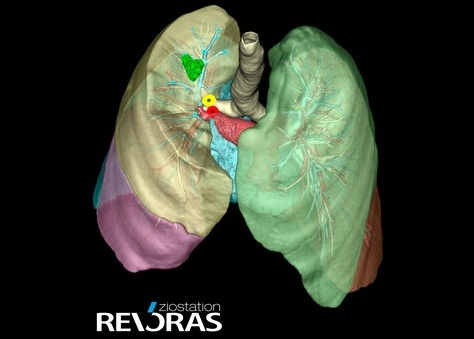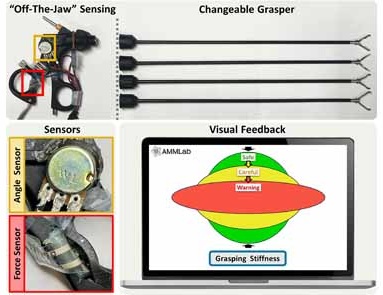Resuscitation Units Speed Up Triage of Critically Ill Patients
|
By HospiMedica International staff writers Posted on 06 Mar 2016 |

Image: The University of Maryland Medical Center (Photo courtesy of UMM).
An innovative Shock Trauma Center (STC) model helps direct critically ill non-trauma patients to the operating room (OR) or hospital intensive care unit (ICU) as quickly as possible.
Formed at the University of Maryland Medical Center (UMM; Baltimore, USA) in July 2013, the six-bed critical care resuscitation unit (CCRU) is an ICU located inside the STC, with the goal of speeding up adult critical care transfers to UMMC. An attending intensivist staffs the CCRU around the clock and directs patient throughout assessment and stabilization process; CCRU staff and subspecialists collaborate to rapidly evaluate and stabilize patients, and then transfer them to the unit that will best serve their needs.
In the year after the CCRU opened, overall transfers increased 64.5%, and those of critically ill surgical patients increased by 93.6%. For patients who needed surgery, the median arrival times at the CCRU decreased significantly, from 223 to 118 minutes, as did median time to surgery, from about 57 hours to around 18.5 hours. Likewise, median hospital length of stay declined from 17 to 13 days, and even death rates declined from 16.5 % to 14.6%. UMM reported the outcomes of CCRU implementation in a study published on February 23, 2016, in the Journal of the American College of Cardiology (JACC).
“As the population ages and the nature of their illnesses becomes more complex, often involving multiple diseases, the demand for referral centers like UMMC to handle critically ill patients has increased,” said lead author Thomas Scalea, MD, physician-in-chief at the UMMC STC. “Time is a huge variable. There are a number of things—aortic dissection, acute vascular insufficiency, arguably stroke and sepsis—that are all time-related diseases; the clock starts ticking at the time the disease strikes.”
“Community hospitals seek to transfer their most challenging cases to high-volume centers best equipped to provide specialty urgent care,” concluded Dr. Scalea. “The time it takes to get appropriate care can be important when dealing with time-sensitive diseases like stroke, hemorrhage, severe abdominal pain, respiratory failure, and any number of cardiovascular problems. If you burn the time trying to get the patient to the hospital, you have less time to intervene. The more you can truncate the time, the better patients do.”
Related Links:
University of Maryland Medical Center
Formed at the University of Maryland Medical Center (UMM; Baltimore, USA) in July 2013, the six-bed critical care resuscitation unit (CCRU) is an ICU located inside the STC, with the goal of speeding up adult critical care transfers to UMMC. An attending intensivist staffs the CCRU around the clock and directs patient throughout assessment and stabilization process; CCRU staff and subspecialists collaborate to rapidly evaluate and stabilize patients, and then transfer them to the unit that will best serve their needs.
In the year after the CCRU opened, overall transfers increased 64.5%, and those of critically ill surgical patients increased by 93.6%. For patients who needed surgery, the median arrival times at the CCRU decreased significantly, from 223 to 118 minutes, as did median time to surgery, from about 57 hours to around 18.5 hours. Likewise, median hospital length of stay declined from 17 to 13 days, and even death rates declined from 16.5 % to 14.6%. UMM reported the outcomes of CCRU implementation in a study published on February 23, 2016, in the Journal of the American College of Cardiology (JACC).
“As the population ages and the nature of their illnesses becomes more complex, often involving multiple diseases, the demand for referral centers like UMMC to handle critically ill patients has increased,” said lead author Thomas Scalea, MD, physician-in-chief at the UMMC STC. “Time is a huge variable. There are a number of things—aortic dissection, acute vascular insufficiency, arguably stroke and sepsis—that are all time-related diseases; the clock starts ticking at the time the disease strikes.”
“Community hospitals seek to transfer their most challenging cases to high-volume centers best equipped to provide specialty urgent care,” concluded Dr. Scalea. “The time it takes to get appropriate care can be important when dealing with time-sensitive diseases like stroke, hemorrhage, severe abdominal pain, respiratory failure, and any number of cardiovascular problems. If you burn the time trying to get the patient to the hospital, you have less time to intervene. The more you can truncate the time, the better patients do.”
Related Links:
University of Maryland Medical Center
Latest Critical Care News
- First-Of-Its-Kind AI-Powered Probability Scoring System Assesses Heart Failure with Preserved Ejection Fraction
- AI-Assisted Colonoscopy Detects More Polyps but Has Modest Effect on Cancer Risk
- Wearables Could Reduce Need for Continuous Blood Thinners in Patients with Atrial Fibrillation
- AI Model Provides Real-Time Sepsis Risk Alerts for Improving ICU Patient Survival
- AI Algorithm Improves Intravenous Nutrition for Premature Babies
- Smart Mirror Generates AI-Powered Health Insights by Analyzing Facial Blood Flow
- Painless Diabetes Patch to Replace Needle Pricks

- Sensory T-Shirt Monitors Patient’s Vitals After Urological Surgery for Cancer
- Super-Sensitive Radar Technology Warns of Serious Heart Issues
- Thermal Imaging Could Accurately Track Vital Signs for Early Disease Detection
- New Microfluidic Device Improves Safety of Leukemia Treatment for Children
- Precision Transfusion Approach Improves Outcomes in TBI Patients
- Predictive Model for Daily Risk Alerts in Sepsis Patients Enables Early Intervention
- Novel Technology Measures Intracranial Pressure More Accurately and Non-Invasively
- Novel Coating Significantly Extends Longevity of Implantable Biosensors
- Nanogel-Based Drug Delivery Technology to Improve UTI Treatment
Channels
Artificial Intelligence
view channel
Innovative Risk Score Predicts Heart Attack or Stroke in Kidney Transplant Candidates
Heart researchers have utilized an innovative risk assessment score to accurately predict whether patients being evaluated for kidney transplants are at risk for future major cardiac events, such as a... Read more
AI Algorithm Detects Early-Stage Metabolic-Associated Steatotic Liver Disease Using EHRs
Liver disease, which is treatable when detected early, often goes unnoticed until it reaches advanced stages. Metabolic-associated steatotic liver disease (MASLD), the most prevalent form of liver disease,... Read moreSurgical Techniques
view channel
Tiny Robotic Tools Powered by Magnetic Fields to Enable Minimally Invasive Brain Surgery
Over the past few decades, there has been a significant surge in the development of robotic tools designed to facilitate minimally invasive surgeries, improving recovery times and patient outcomes.... Read more
Magnetic Tweezers Make Robotic Surgery Safer and More Precise
Microrobots are small-scale robots designed using nanotechnology, and they hold significant potential for various medical applications, including surgery, targeted drug delivery, and biopsy.... Read morePatient Care
view channel
Portable Biosensor Platform to Reduce Hospital-Acquired Infections
Approximately 4 million patients in the European Union acquire healthcare-associated infections (HAIs) or nosocomial infections each year, with around 37,000 deaths directly resulting from these infections,... Read moreFirst-Of-Its-Kind Portable Germicidal Light Technology Disinfects High-Touch Clinical Surfaces in Seconds
Reducing healthcare-acquired infections (HAIs) remains a pressing issue within global healthcare systems. In the United States alone, 1.7 million patients contract HAIs annually, leading to approximately... Read more
Surgical Capacity Optimization Solution Helps Hospitals Boost OR Utilization
An innovative solution has the capability to transform surgical capacity utilization by targeting the root cause of surgical block time inefficiencies. Fujitsu Limited’s (Tokyo, Japan) Surgical Capacity... Read more
Game-Changing Innovation in Surgical Instrument Sterilization Significantly Improves OR Throughput
A groundbreaking innovation enables hospitals to significantly improve instrument processing time and throughput in operating rooms (ORs) and sterile processing departments. Turbett Surgical, Inc.... Read moreHealth IT
view channel
Printable Molecule-Selective Nanoparticles Enable Mass Production of Wearable Biosensors
The future of medicine is likely to focus on the personalization of healthcare—understanding exactly what an individual requires and delivering the appropriate combination of nutrients, metabolites, and... Read more
Smartwatches Could Detect Congestive Heart Failure
Diagnosing congestive heart failure (CHF) typically requires expensive and time-consuming imaging techniques like echocardiography, also known as cardiac ultrasound. Previously, detecting CHF by analyzing... Read morePoint of Care
view channel
Handheld, Sound-Based Diagnostic System Delivers Bedside Blood Test Results in An Hour
Patients who go to a doctor for a blood test often have to contend with a needle and syringe, followed by a long wait—sometimes hours or even days—for lab results. Scientists have been working hard to... Read more
Smartphone-Enabled, Paper-Based Quantitative Diagnostic Platform Transforms POC Testing
Point-of-care diagnostics are crucial for public health, offering rapid, on-site testing that enables prompt diagnosis and treatment. This is especially valuable in remote or underserved regions where... Read moreBusiness
view channel
Expanded Collaboration to Transform OR Technology Through AI and Automation
The expansion of an existing collaboration between three leading companies aims to develop artificial intelligence (AI)-driven solutions for smart operating rooms with sophisticated monitoring and automation.... Read more

















